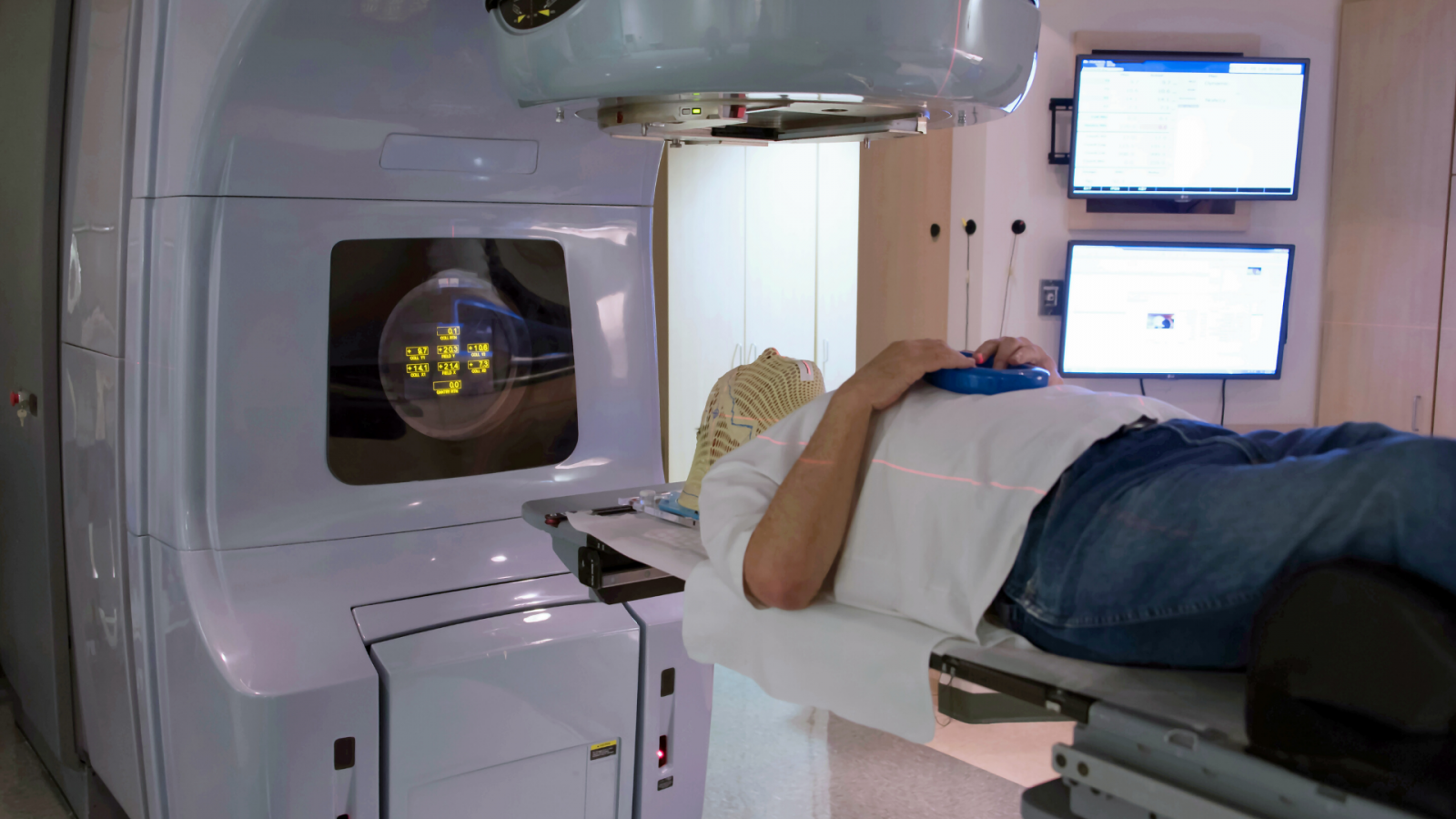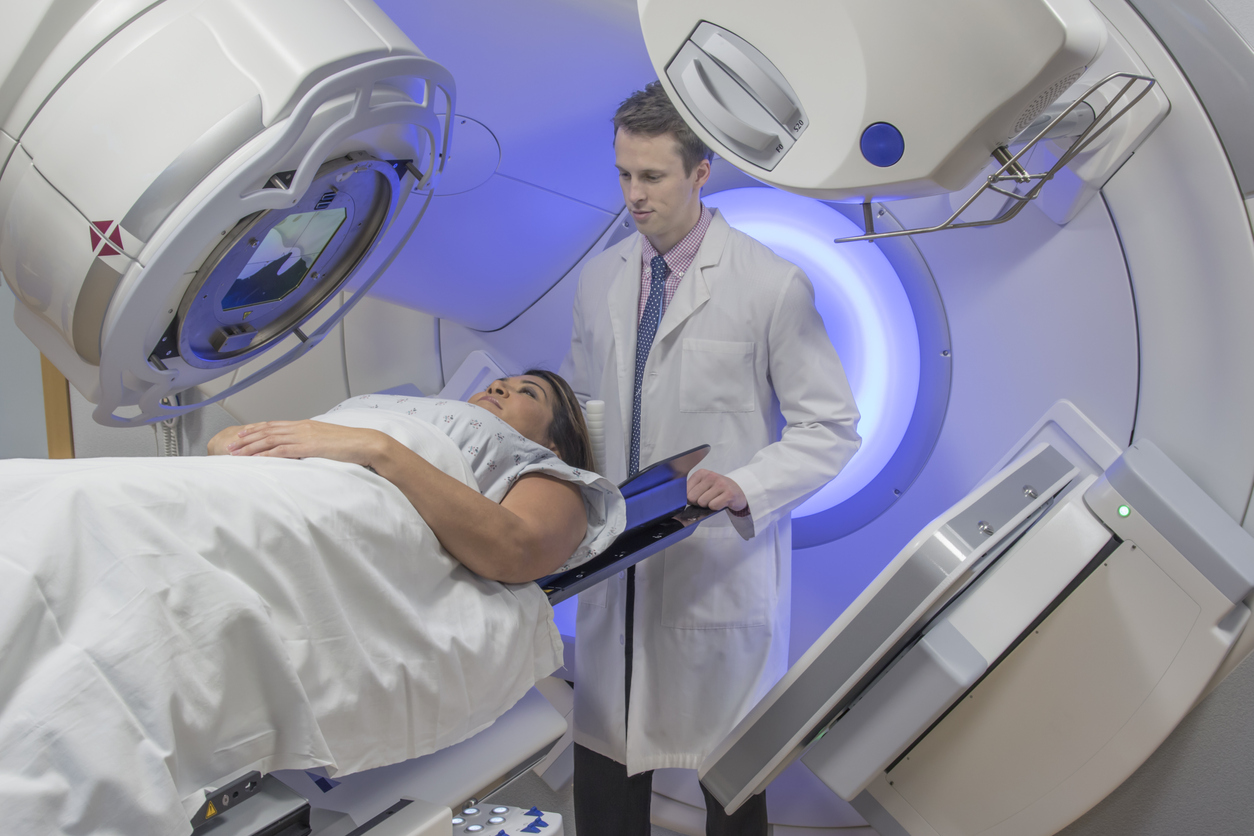Radiotherapy for brain tumours

On this page:
Radiotherapy is when high-energy X-rays are aimed at tumour cells to kill them. Radiotherapy can also be used after surgery to kill any tumour cells left behind. The dosage and length of treatment can vary between patients, even between those with the same type of tumour. The course can be several treatments over a number of days or weeks (6-8 weeks).
Radiotherapy can also be used to control and relieve symptoms. This is called palliative radiotherapy. You will need between 1 and 10 doses of palliative radiotherapy to relieve your symptoms.
Brain tumours can be treated with very precise types of radiotherapy like three-dimensional conformal radiotherapy (3D-CRT) and intensity modulated radiotherapy (IMRT). The radiotherapy is aimed precisely at the tumour, while doing the least damage to nearby normal cells.
Planning radiotherapy
You will need to go to hospital before you have radiotherapy to plan your treatment. This will involve simulation and having a mask made. It may take more than one trip to hospital before everything is ready.
Simulation
Simulation means working out exactly where the radiotherapy beams will be aimed. A CT scanner will be used to plan the places the radiotherapy needs to target.
Making your mask
You will wear a mask during treatment to keep your head still, so that the radiotherapy targets the right area. The mask is moulded from plastic to the shape of your face. Marks are put on the mask to show where treatment will be given. Read more about masks for radiotherapy.
Short-term possible side-effects:
- Tiredness (fatigue)
- Headaches
- Hair loss in the treated area
- Skin changes in the treatment area
- Drowsiness
- Nausea or feeling sick
Usually side-effect clear up in the weeks and months after treatment, but occasionally they can be long term.
Read more about radiotherapy and its side-effects.
For more information
Phone
1800 200 700



